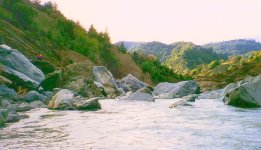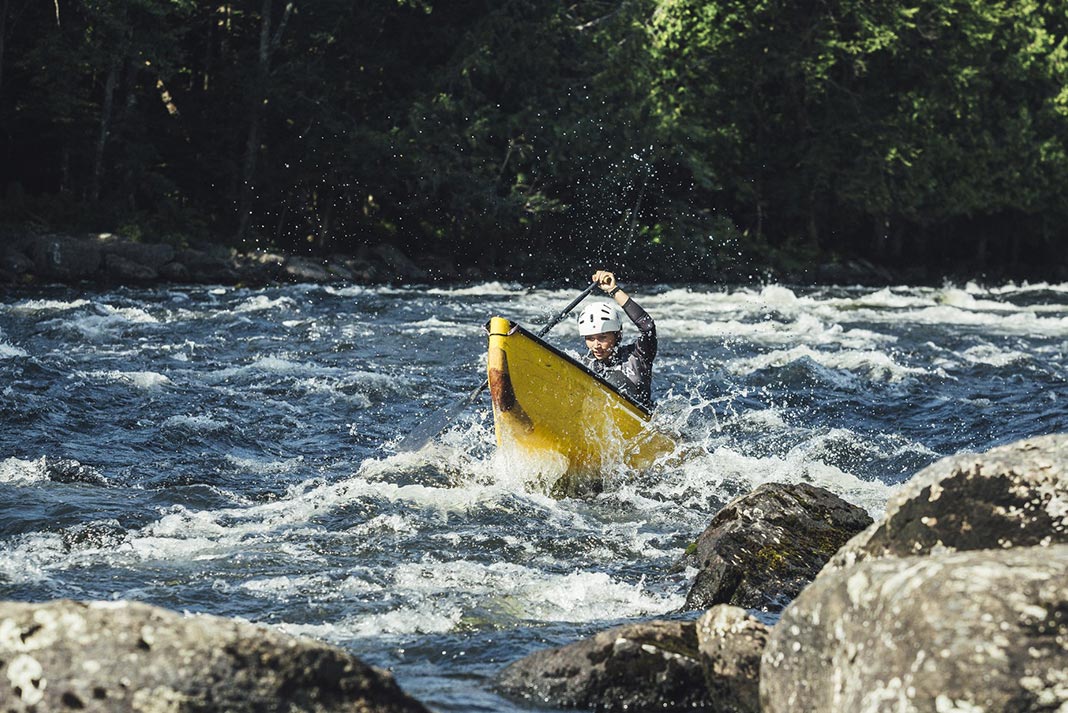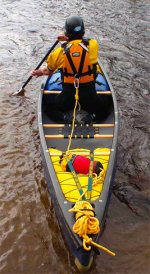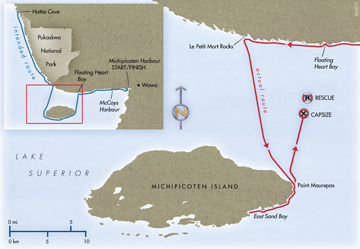If you've never seen a boat washed away downstream from the paddler in whitewater, then I think you have either been very lucky or have never paddled or taken play risks in hard whitewater. I have seen canoes lost, including my own. These were dumps that happened at the head of class 5 rapids into which no rescue boater dared venture in order to chase the escaped canoe. Here's where my canoe went—Coal Mine Falls on the middle fork of the Eel River in California.

Another time I was so savagely window-shaded sideways while surfing the Big Nasty hole on the Cheat River at high water that my PFD was completely unzipped somehow by the hole as the canoe was flushed away from me by tens of thousands of pounds of reversing water force. Fortunately, I had replaced my PFD's fabric waist ties with mountaineering prusik cord and interlocking carabiners, so it stayed on me. And it was also fortunate there was a very slow pool downstream of the hole where my canoe eddied itself out. Big Nasty eats giant rafts, so good luck holding onto an open canoe when you are totally disoriented, terrified and half-drowned:
Paddling completely alone in hard whitewater like the Grand Canyon, with no potential rescue boaters, adds another level of risk. Securing oneself to the boat via a detachable belt or harness in such situation makes overall safety sense, in my opinion.
In our club, we added a second detachment link on the rope itself, within an arm's length of the paddler, just in case the belt or vest couldn't be detached for some (very unlikely) reason. We did this not because we were on a wilderness trip, but because we were playing aggressively in holes, dumps were unavoidable, not everyone had a bomb-proof open boat roll, and boats flushing away from a window-shaded and upstream dumping paddler's grasp was not uncommon.
I never saw anyone get entangled in the rope. To me, that's an over-hyped cautionary bromide right along with "
never paddle alone", "
never stand up in a canoe", and "
never paddle without a PFD." Different experienced folks can weigh risks differently, and I happen to think just about all reasonable general rules have reasonable exceptions.
I can say from long practiced safety exercises, and real world whitewater carnage situations, it's easier for the rescuee to swim ashore with both arms free and a rope attached to a rescue belt/harness than it is to swim with one arm holding a painter. It's also easier for a rescuer to tow a dumped boat through a rapid attached to detachable belt belt rope than it is trying to hold the dumped boat's painter clasped in your paddle hand or clamped under your knee.
I would not recommend a self-attached rescue rope in smallish rivers that have lots of protruding or shallowly submerged rocks, or the probability submerged logs, branches or sweepers. The device is best limited to big water rivers with few surface and subsurface obstacles but large hydrodynamic water forces. And, again, I would recommend a second detachment mechanism within an arm's length of the paddler in addition to the detachable belt or harness on the paddler.
Along similar self-rescue practices, it is normal practice for outrigger canoe paddlers go out in giant ocean swells far from shore without wearing a PFD and with the canoe attached to an ankle leash. The canoe is your "PFD" and you cannot take any risk of it being blown away from you if you "go huli" (dump) while surfing big rollers. So, you must attach the canoe to your body.
For similar reasons, although I have never done it, it makes eminent safety sense to me to use a rope attached to some sort of quick release mechanism if you are a solo flat water canoeist making a big crossing in wind. In my opinion, having the boat blow away from you in wind and waves is a significant and perhaps fatal risk, whereas the risk of a fatal rope entanglement is tiny.

 paddlingmag.com
paddlingmag.com





